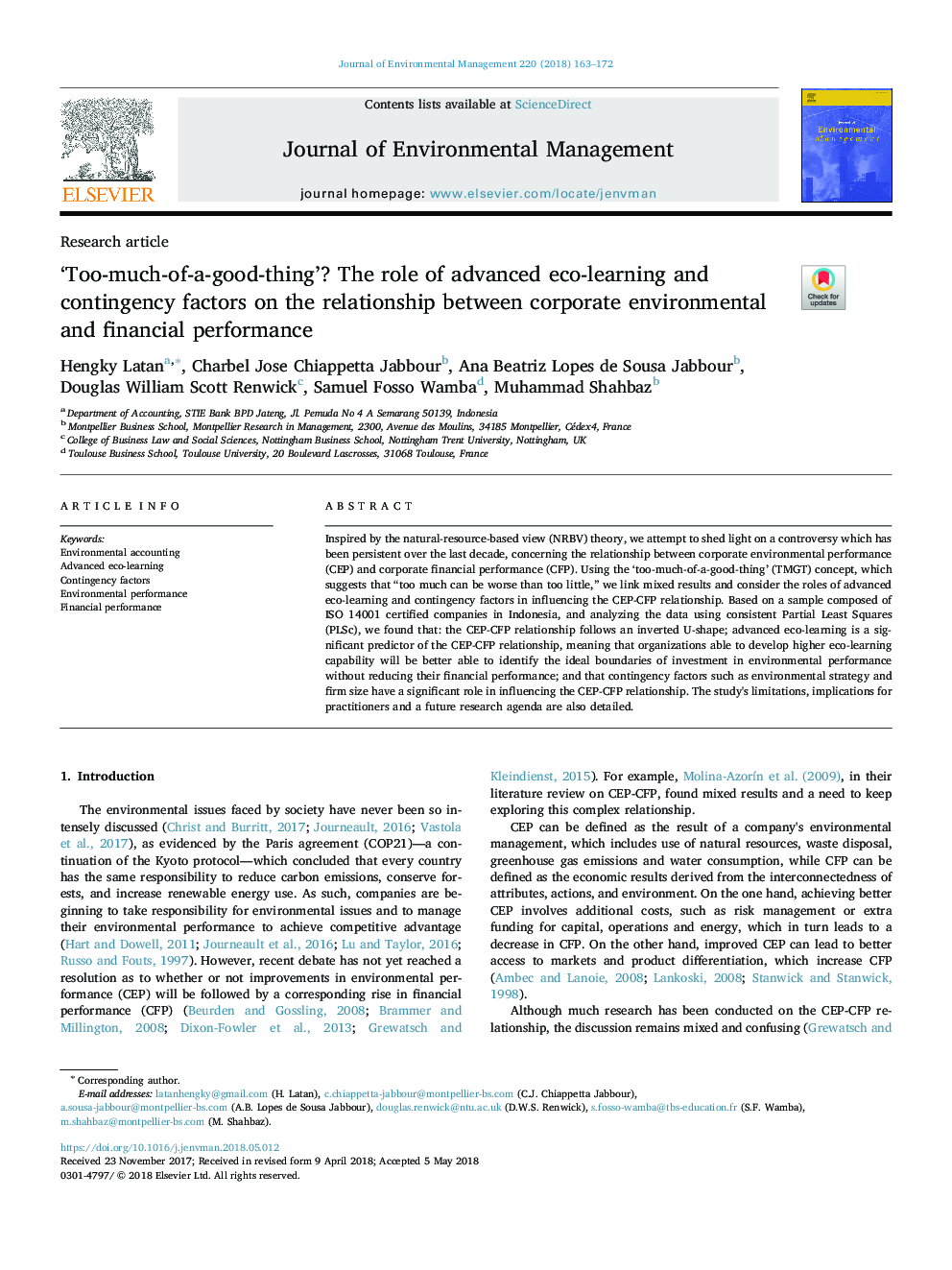| Article ID | Journal | Published Year | Pages | File Type |
|---|---|---|---|---|
| 7476486 | Journal of Environmental Management | 2018 | 10 Pages |
Abstract
Inspired by the natural-resource-based view (NRBV) theory, we attempt to shed light on a controversy which has been persistent over the last decade, concerning the relationship between corporate environmental performance (CEP) and corporate financial performance (CFP). Using the 'too-much-of-a-good-thing' (TMGT) concept, which suggests that “too much can be worse than too little,” we link mixed results and consider the roles of advanced eco-learning and contingency factors in influencing the CEP-CFP relationship. Based on a sample composed of ISO 14001 certified companies in Indonesia, and analyzing the data using consistent Partial Least Squares (PLSc), we found that: the CEP-CFP relationship follows an inverted U-shape; advanced eco-learning is a significant predictor of the CEP-CFP relationship, meaning that organizations able to develop higher eco-learning capability will be better able to identify the ideal boundaries of investment in environmental performance without reducing their financial performance; and that contingency factors such as environmental strategy and firm size have a significant role in influencing the CEP-CFP relationship. The study's limitations, implications for practitioners and a future research agenda are also detailed.
Related Topics
Physical Sciences and Engineering
Energy
Renewable Energy, Sustainability and the Environment
Authors
Hengky Latan, Charbel Jose Chiappetta Jabbour, Ana Beatriz Lopes de Sousa Jabbour, Douglas William Scott Renwick, Samuel Fosso Wamba, Muhammad Shahbaz,
